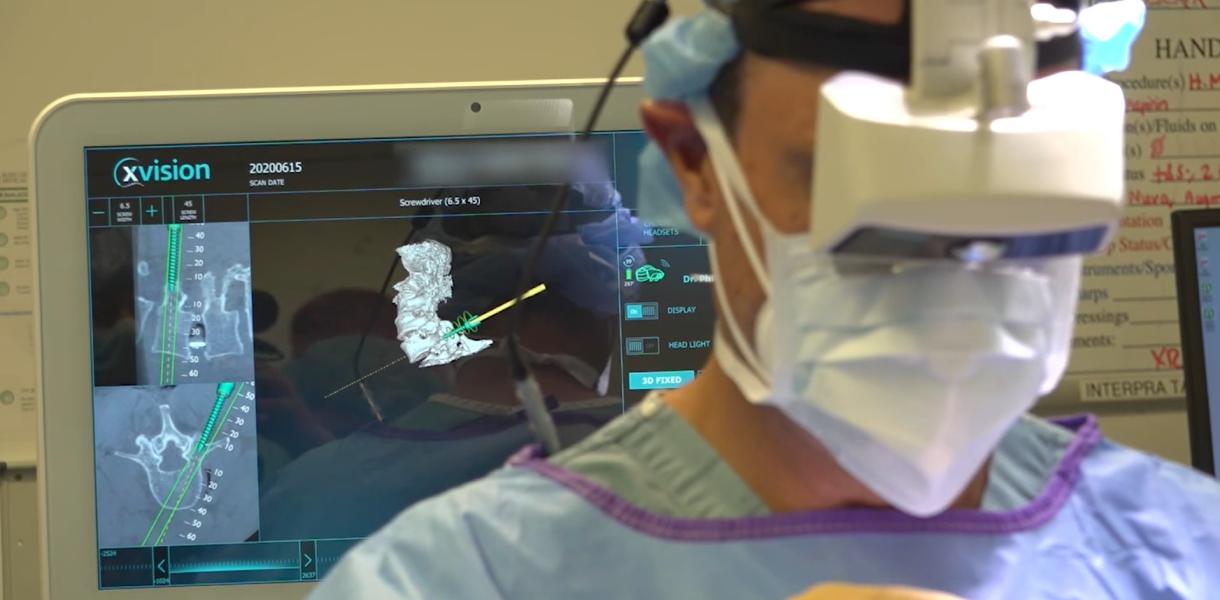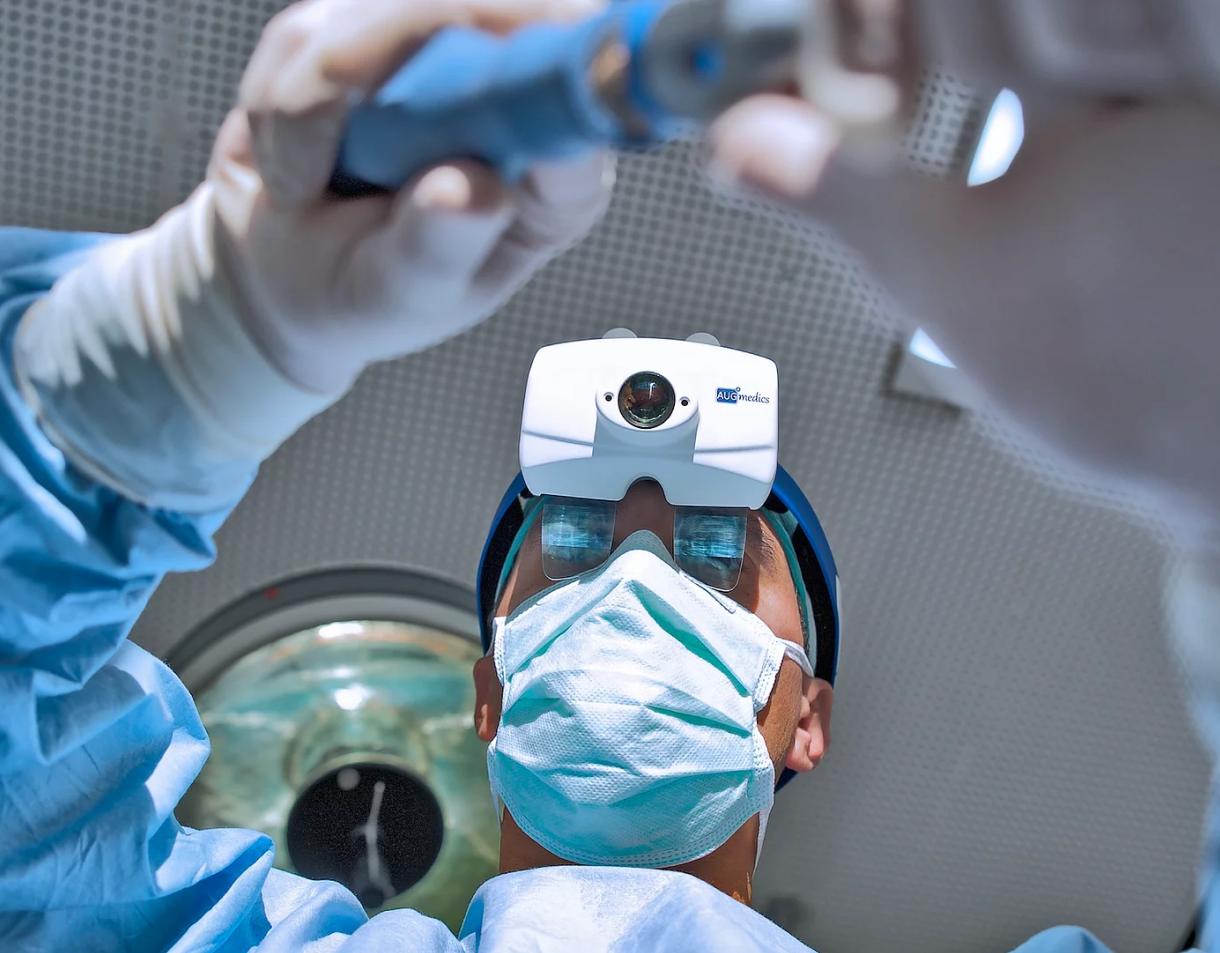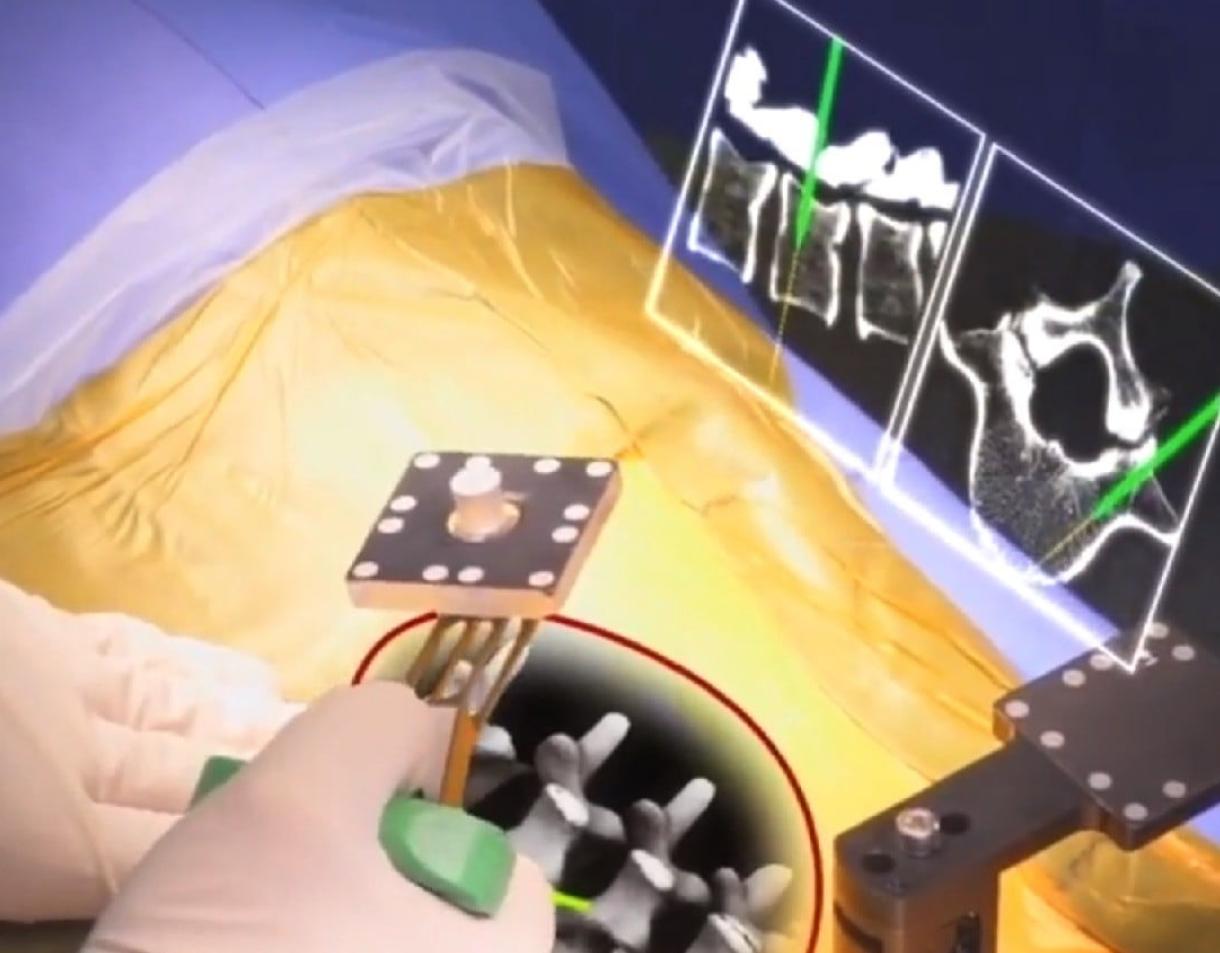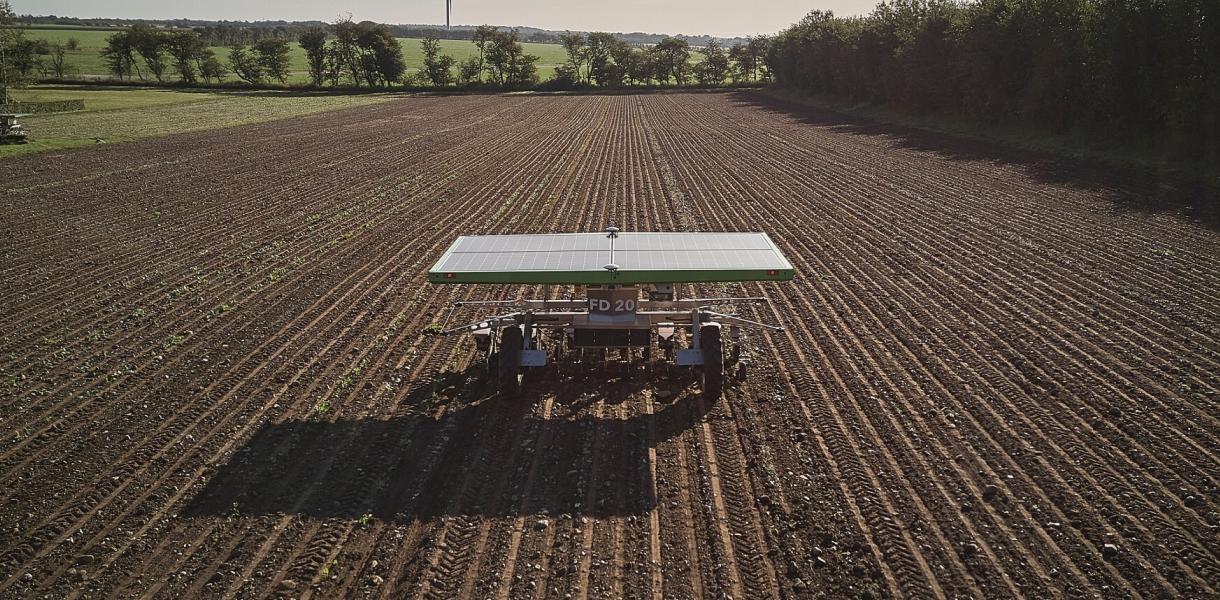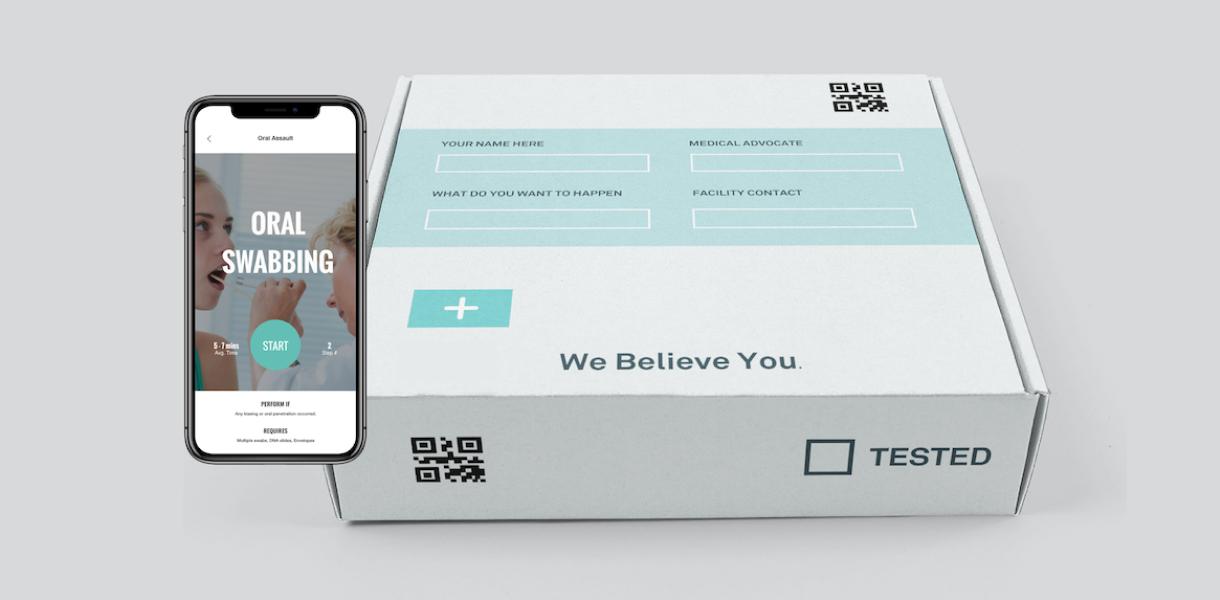What’s the design in a nutshell?
The xvision Spine System by American health company Augmedics is a groundbreaking first: An AR navigation system enabling surgeons to visualise patients’ spinal system in 3D and do surgery while looking at the patient and not on a screen.
Why is it needed?
xvision Spine System aims to revolutionise how we do surgery by making it easier for surgeons, safer for patients and faster for both. And improving the workflow of the doctors and surgeons we trust our health with, and sometimes life, doesn’t sound too bad right?
Spine surgery is one of the most rapidly growing surgical procedures globally. Within this category, there are many complex operations that can have very serious complications if something goes wrong. Surgeries like these often entail patients being under anaesthesia for a long time, as well. A common procedure such as a lumbar spinal fusion can take up to six to seven hours to complete. Without compromising the safety, of course, the lesser time in the operating room, the less blood loss, risk of complications, and the chances of a more rapid recovery improves.
How does it work?
The system consists of a wearable, AR headset and markers from traditional navigation systems. Through this, surgeons can determine the accurate position of instruments in real-time which also gets superimposed on the patient’s CT data. Navigation data is projected onto the surgeon’s retina while they’re looking at the patient, which eliminates the need to operate and reassess through secondary screens. With this time-efficient setup, operation times can sometimes be cut down by two-thirds.
"Augmedics’ system has the potential to optimise and increase safety through its AR approach."
How does it improve life?
xvision Spine System not only improves lives but helps save them as well. In 2017, 5.2 million spine surgeries were performed worldwide and the number is projected to hit 7.6 million by 2022. Within this increasing area of surgery, Augmedics’ system has the potential to optimise and increase safety through its AR approach, and they intend to make their technology available to surgeons at a fraction of the cost of traditional navigation systems.
What’s the impact to date or projected impact?
So far, the xvision Spine System has demonstrated a 98.9% overall percutaneous implant placement accuracy and is now approved by the FDA – the first and only augmented reality surgical image guidance system to be so. Back in March, the company received about €29,5 million in an oversubscribed Series C funding to further its impact.
The system was launched to market in the second half of 2020 and by the end of the year, over 250 surgeries had been performed with the AR navigation system. The company is also looking to expand outside the United States and into European markets as well as develop new products.
